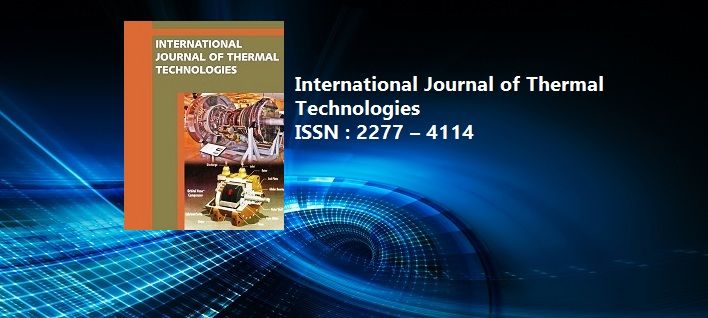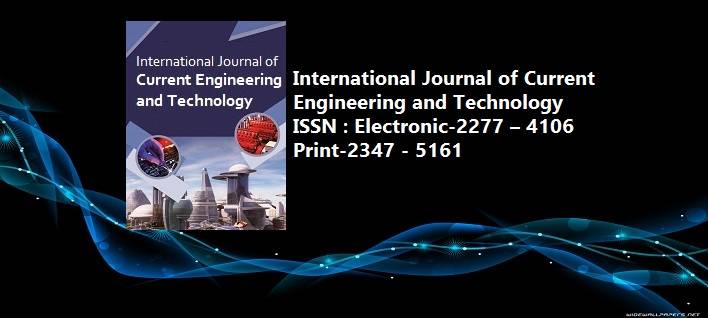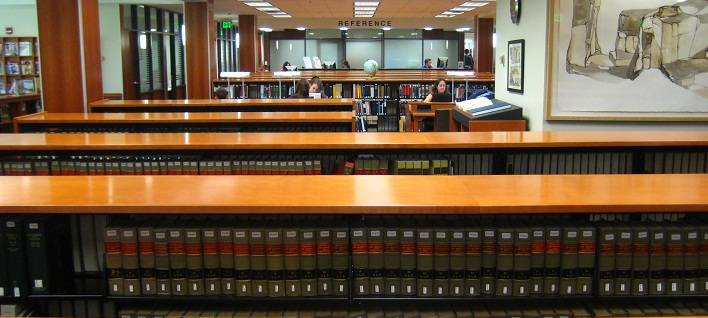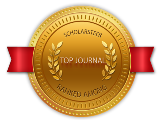Author Guidelines
Manuscript preparation
- The article should be up to 20 pages (10MB) comprising:
- The font should be 10 pt Cambria with 10 pt headings (Not bold)
- The sub headings should be italic (Not Bold)
- The manuscript must be in single line spacing
- An abstract should be fewer than 200 words containing the main results and conclusions
- Up to ten keywords that accurately identify the paper’s subject, purpose and focus
- Materials and methods with sufficient full experimental detail. Sources of material must be given and statistical methods must be specified by reference, unless non-standard
- Use SI units wherever possible. In case of other units the equivalent units should be written in the brackets e.g. 1kgf (9.8N)
- Results should be presented concisely, using well-designed tables and tables should not be drawn with line drawing and similarly the figures
- Write name of the table above the table and name of the figure below figure. Tables and figures must not be placed in Wrap Mode. Figures must not be inserted in the Tables/ Boxes
- Discussion should cover the implications and consequences, not merely summarize the results and conclusions should be concise
- Acknowledgement should be brief and meaningful, insignificant formalities should be avoided
References should be given in brackets as shown below. We are giving you an example how to modify the references cited references within the article
When writing a piece of academic work, you must acknowledge any sources which you have used. You do this by including a brief in-text ‘citation’ within the main body of your writing, next to the material you have used.
The IEEE style is a numeric style, where citations are numbered [1] in the order of appearance. This citation leads your reader to a full reference to the source in the list of references at the end of your work. Each citation number should be enclosed in square brackets on the same line as the text, before any punctuation, with a space before the bracket [2]. Once a source has been cited, the same number is re-used for all subsequent citations to the same source.
Here are some examples of reference style citation:
“… as shown by Brown [4], as previously stated.”
“The theory was first put forward in 1987 [1].”
“For example, see [7].”
“Several recent studies [3, 4, 15, 16] have suggested that…”
The example above may also be formatted as:
“Several recent studies [3], [4], [15], [16] have suggested that…”
Page numbers are required within citations where material is directly quoted or you refer to a specific part of the source, such as a detail difficult to find. Give page numbers within the square brackets, for example [1, p. 3].
References
At the end of your work, list full details of all of the sources which you have cited in your text in a section headed References, in numeric order. References listed must follow formatting guidelines (see reference examples overleaf). Your reference list should allow anyone reading your work to identify and find the material to which you have referred.
Reference examples
There are standard reference formats for most types of document. Below are examples of the most common types of document you might want to reference. Each of the following gives a suggested standard format for the reference followed by examples for the different document types.
Book
[Ref number] Author’s initials. Author’s Surname, Book Title, edition (if not first). Place of publication: Publisher, Year.
[1] I.A. Glover and P.M. Grant, Digital Communications, 3rd ed. Harlow: Prentice Hall, 2009.
Book chapter
[Ref number] Author’s initials. Author’s Surname, “Title of chapter in book,” in Book Title, edition (if not first), Editor’s initials. Editor’s Surname, Ed. Place of publication: Publisher, Year, page numbers.
[2] C. W. Li and G. J. Wang, “MEMS manufacturing techniques for tissue scaffolding devices,” in Mems for Biomedical Applications, S. Bhansali and A. Vasudev, Eds. Cambridge: Woodhead, 2012, pp. 192-217.
Electronic Book
[Ref number] Author’s initials. Author’s Surname. (Year, Month Day). Book Title (edition) [Type of medium]. Available: URL
[3] W. Zeng, H. Yu, C. Lin. (2013, Dec 19). Multimedia Security Technologies for Digital Rights Management [Online]. Available: http://goo.gl/xQ6doi
Note: If the e-book is a direct equivalent of a print book e.g. in PDF format, you can reference it as a normal print book.
Journal article
[Ref number] Author’s initials. Author’s Surname, “Title of article,” Title of journal abbreviated in Italics, vol. number, issue number, page numbers, Abbreviated Month Year.
[4] F. Yan, Y. Gu, Y. Wang, C. M. Wang, X. Y. Hu, H. X. Peng, et al., “Study on the interaction mechanism between laser and rock during perforation,” Optics and Laser Technology, vol. 54, pp. 303-308, Dec 2013.
Note: the above example article is from a journal which does not use issue numbers, so they are not included in the reference.
E-Journal article
PDF versions of journal articles are direct copies of the print edition, so you can cite them as print journals.
[Ref number] Author’s initials. Author’s Surname. (Year, Month). “Title of article.” Journal Title [type of medium]. volume number, issue number, page numbers if given. Available: URL
[5] M. Semilof. (1996, July). “Driving commerce to the web-corporate intranets and the internet: lines blur”. Communication Week [Online]. vol. 6, issue 19. Available: http://www.techweb.com/se/directlinkcgi?CWK19960715S0005
Please see the Sample Article page at the top for further help to prepare your manuscript.
Submission
Manuscripts should be submitted by one of the authors of the manuscript through the online Article Submission Form. Regardless of the source of the word-processing tool, only Word (.doc, .docx, .rtf) files can be submitted through the Online submission Form (OSF) . There is no page limit. Only online submissions are accepted to facilitate rapid publication and minimize administrative costs. Submissions by anyone other than one of the authors will not be accepted. The submitting author takes responsibility for the paper during submission and peer review. If for some technical reason submission through the OSF is not possible, the author can contact the concerned editors for support.
Terms and conditions of submission
Papers must be submitted on the understanding that they have not been published elsewhere (except in the form of an abstract or as part of a published lecture, review, or thesis) and are not currently under consideration by another journal published by Inpressco or any other publisher. The submitting author is responsible for ensuring that the article’s publication has been approved by all the other co-authors. It is also the authors’ responsibility to ensure that the articles emanating from a particular institution are submitted with the necessary approval of the institution/University. Only an acknowledgment from the editorial office officially establishes the date of receipt. Further correspondence and proofs will be sent to the author(s) before publication unless otherwise indicated. It is a condition of submission of a paper that the authors permit editing of the paper for readability.
Peer review
All manuscripts are subject to peer review by a number of the editorial board members and are expected to meet standards of international academic excellence.
Withdrawal of the manuscript
The manuscript can be withdrawn with in 3 days of the submission. Once the article is processed and published, it can not be withdrawn.
Article processing charges
All of the journals within the Inpressco series are published using an Open Access publication model. Open access charges allow publishers to make the published material available for free to all interested online visitors. For more details about the article processing charges of a particular Inpressco journal, please visit the Article Processing Charges information page on the journal’s website.
Units and measurements
Units of measurement should be presented simply and concisely using System International (SI) units.
Title and authorship information
The following information should be included
Paper title
Full author names
Full institutional mailing addresses
Email addresses
Proofs
Corrected proofs must be returned to the publisher within 10-15 days of receipt. The publisher will do everything possible to ensure prompt publication. It will therefore be appreciated if the manuscripts and figures conform from the outset to the style of the journal.
Copyrights
Open Access authors retain the copyrights of their papers, and all open access articles are distributed under the terms of the Creative Commons Attribution license, which permits unrestricted use, distribution and reproduction in any medium, provided that the original work is properly cited.
The use of general descriptive names, trade names, trademarks, and so forth in this publication, even if not specifically identified, does not imply that these names are not protected by the relevant laws and regulations.
While the advice and information in this journal are believed to be true and accurate on the date of its going to press, neither the authors, the editors, nor the publisher can accept any legal responsibility for any errors or omissions that may be made. The publisher makes no warranty, express or implied, with respect to the material contained herein.
Disclosure policy
A competing interest exists when professional judgment concerning the validity of research is influenced by a secondary interest, such as financial gain. We require that our authors reveal all possible conflicts of interest in their submitted manuscripts.
Micro array data submission
For any article that includes microarray data, this data should be deposited in an appropriate database such as Gene Expression Omnibus (GEO) or Array Express, and an entry name or accession number must be included in the manuscript prior to its publication. Micro array data should be MIAME compliant.
During the reviewing process, submitting authors are committed to provide the editor and the reviewers handling his/her manuscript with the login information by which they can access this information in the database.
Ethical guidelines
In any studies that involve experiments on human or animal subjects, the following ethical guidelines must be observed.
I)Human experiments
All work must be conducted in accordance with the Rules. Papers describing experimental work on human subjects who carry a risk of harm must include:
A statement that the experiment was conducted with the understanding and the consent of the human subject.
A statement that the responsible Ethical Committee has approved the experiments.
II)Animal experiments
Papers describing experiments on living animals should provide:
A full description of any anaesthetic and surgical procedure used.
Evidence that all possible steps were taken to avoid animal suffering at each stage of the experiment. Papers describing experiments on isolated tissues must indicate precisely how the donor issues were obtained.



















 MECHPGCON, MIT College of Engineering, Pune, India
MECHPGCON, MIT College of Engineering, Pune, India AMET, MIT College of Engineering, Pune, India
AMET, MIT College of Engineering, Pune, India International Conference on Advances in Mechanical Sciences
International Conference on Advances in Mechanical Sciences  International Symposium on Engineering and Technology
International Symposium on Engineering and Technology International Conference on Women in Science and Engineering
International Conference on Women in Science and Engineering




